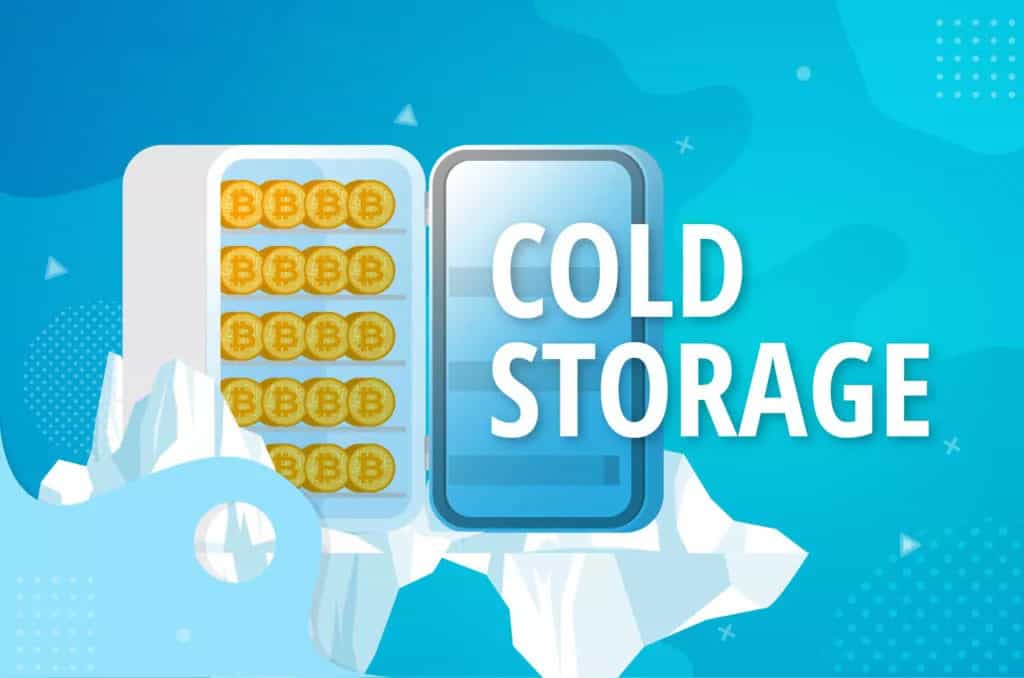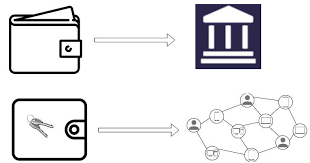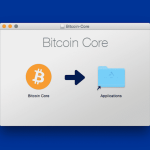How to keep your cold wallet safe isn’t just smart; it’s essential. Imagine your hard-earned crypto vanishing because you overlooked security. Not on my watch! As a crypto enthusiast, I’ve seen mistakes that could make your digital wallet a hacker’s playground. Your cold wallet is like a vault, and I want to arm you with iron-clad ways to protect it. From the physical to the digital realm, I’ll guide you through simple yet powerful steps to shield your investments. Read on for seven smart tips to lock down your crypto like Fort Knox.
Understanding Cold Wallet Security Best Practices
The Importance of Physical Wallet Security Measures
You can’t be too safe with your cold wallet. Picture this: It’s small, holds huge value, and is a little box of secrets. That’s your hardware wallet. You have to keep it under wraps and out of harm’s way. This means you need good physical wallet security measures. First, know where it is at all times. Second, make sure it’s in a place only you can get to. A locked drawer? Great. A safe? Even better. You wouldn’t leave gold bars out, right? Treat your cold wallet the same.
When you’re not around, your wallet must stay hidden. Thieves can’t steal what they can’t find. Also, if a fire breaks out or a flood hits, have a fireproof and waterproof safe. It’s your crypto life raft. Now, what if someone sees you using it? They might get ideas. Keep your wallet use hush-hush, just like you would your PIN. Lock your doors, draw the curtains. Privacy is key.
Strategies for Safeguarding Private Keys
Private keys are the soul of your wallet. Think of them like the most important password. If someone else gets them, they’re in, and your crypto’s gone. So how do you keep this vital secret safe? Write it down on paper or engrave it on metal. Yeah, old-school, but it works. Tech can fail; paper and metal don’t need to charge batteries.
Here’s the big question: Where do you stash this critical info? Somewhere very safe, where only you can grab it. Maybe a different spot from your cold wallet, so if one is found, the other stays safe. Remember, “out of sight, out of mind” is golden.
For extra safety, think about splitting the key. Break it up. Keep parts in different places. It’s like keeping your eggs in various baskets. If one’s in trouble, the rest is okay. This way, a thief needs more than just luck to swipe your crypto.
Then, there’s the seed phrase. It’s like a master key to all your keys. It’s your crypto recovery kit. Mess it up or lose it, and you’re in deep water. Write it down, lock it up, same as your private key. Think of it as the ultimate backup.
How about multi-signature setups? It’s when your wallet needs more than one key to open. Even if someone finds one key, they need the others to do anything. It’s teamwork for your wallet’s defense.
Also, make friends with two-factor authentication. It’s like a guard dog for your keys. Even if someone gets your key, without the second part, they can’t do much. And software? Keep it up to date. It’s like giving your wallet a new shield now and then.
To wrap up, here’s your action list. Hide your wallet like a pro. Write down keys and keep them apart. Consider splitting keys for extra safety. Make sure your seed phrase is locked down tight. Think multi-signature for higher security walls, and use two-factor authentication. Lastly, keep that software shiny and new.
These tips aren’t just suggestions; they’re the blueprint for keeping your crypto castle secure. Remember, your cold wallet is only as safe as the effort you put into protecting it. So, be vigilant, be smart, and keep your cold wallet locked down.
Enhancing Hardware Wallet Protection Methods
Leveraging Multi-Signature Setup for Wallet Safety
A multi-signature setup means you need more than one key to get into your crypto stash. Think of it like needing a few people to say “yes” before a treasure chest opens. This way, if a bad guy gets one key, they can’t take your money. It’s important for keeping your coins safe because you split the power. No one person can do much without the others. And this team effort keeps your cold wallet security tight.
Use more than one signature to lock down your crypto. That way, even if a thief gets one key, they can’t get the treasure inside. This is crypto teamwork that keeps your cold wallet safer than a single key would.
Regular Firmware Upgrades and Their Role in Security
Firmware is like a brain for your hardware wallet. You need to keep it smart by upgrading it with new software. This is key because old firmware might have holes that hackers can slip through. By keeping it updated, you make sure your hardware wallet stays one step ahead of the bad guys.
You want to close those holes before hackers find them. And that’s what upgrades do. They fix weak spots so no one can sneak in. Check your wallet maker’s site often. They’ll tell you when it’s time for an upgrade. Always be ready to update. It’s like putting a better lock on an already strong door.
Be like a smart updater. Keep your wallet brain sharp with the latest software so hackers can’t find weak spots. Visit the wallet maker’s site and be quick to improve your defenses. It’s like making a strong door even stronger.
Cold Storage Risks and Solutions
Implementing Cold Wallet Backup Protocols
To keep your cold wallet safe, you need to back it up. This means making copies of your wallet’s info. Think of it like this: you wouldn’t ride a bike without a spare tube, right? Your cold wallet needs the same care. Here’s how you do it.
First, copy your seed phrases. These are the keys to your crypto kingdom, so write them down. Then, store them somewhere safe, like a locked safe or with someone you trust a lot. Just like you wouldn’t leave your house keys out for anyone to grab, don’t leave your seed phrases lying around.
Next, use multiple backups. What if one backup fails? Have a plan B, and maybe a plan C. Place them in different spots, like you would hide Easter eggs in a garden. That way, if one is lost or stolen, you still have another.
Now, think about using something called ‘encryption’. It’s a way to lock your info so only you can unlock it. It’s like a diary with a lock. Only you have the key, so your secrets stay safe. Use a strong password to make sure your backup files are super secure.
Finally, make sure your backups are up to date. If you add new crypto to your wallet, update your backups. It’s like updating your address book when your friend moves to a new house. You want the latest info so you can always find them.
Crafting a Solid Disaster Recovery Plan for Cold Storage
Having backups is great, but what if something big and bad happens? Like a fire or a flood? You need a disaster recovery plan to keep your crypto safe from these big troubles.
Start by thinking about different bad things that could happen. Then, make a plan for each one. For instance, if you worry about a fire, maybe keep a backup in a fireproof safe. Or, if you live in a place where flood is a risk, store your backups high up, like on a top shelf.
Having a friend you trust hold on to a backup is also smart. Choose someone who lives far away from you. That way, if something happens in your area, your friend’s place might still be safe. It’s like having a backup friend when your best buddy moves away.
Your plan should also have steps on what to do first, second, and so on if disaster hits. Just like a fire drill at school, know where to go and what to do when trouble comes. And practice it, so you aren’t trying to figure things out when you are scared or rushed.
Remember that keeping your cold wallet safe is like taking care of a garden. It needs regular check-ups and a good fence to keep out thieves. Your backup protocols and disaster recovery plan are your tools to help your crypto grow safely.
Keep these tips in mind, and your crypto will stay safe, like treasure buried in a fortress. Even if it seems tough, safety is worth it. Your future self will thank you for keeping their treasure locked tight!
Smart Tips for Secure Offline Crypto Wallets
Embracing Two-Factor Authentication and Encryption Techniques
Let’s talk about keeping your crypto locked down tight. The first smart move is two-factor authentication (2FA). Simply put, it’s like having a double lock on your door. When you log in, you need two proofs of ID. First may be something you know, like a password. Then something you have, which could be a code from your phone. This makes it much harder for thieves to get into your wallet.
Encryption for your private keys is key too. Think of encryption as a secret code only you can read. It turns your sensitive info into scrambled text. So even if someone gets it, they can’t use it. Always encrypt your keys and keep your wallet software updated. An updated wallet adds latest safety features, which are super important.
Maintaining Anonymity and Avoiding Phishing Attacks on Cold Wallets
Privacy is huge when dealing with crypto. Keep a low profile. Don’t brag about your crypto coins online. This makes you less of a target. It’s important to keep your transactions and your wallet’s details to yourself.
Phishing attacks are tricks scammers use to steal your info. They might send fake emails or set up fake sites that look real. Don’t click on shady emails or give out your wallet’s details. Always check that the website you’re on is the correct one, not a copycat.
What’s a simple way to stop phishing? Remember, real crypto companies won’t ask for your keys or personal info by email. If you’re asked, it’s a red flag. Spotting these scams keeps your crypto safe.
Be smart with how you handle your crypto. Use these tips every day. Remember, good security is about keeping your guard up, updating often and sharing less. Your crypto is worth it!
In this post, we learned key steps to keep our offline crypto wallets safe. We started by tackling cold wallet security basics like physical measures and private key care. Then, we moved on to boosting hardware wallet security. We covered using multi-signature setups and the importance of keeping firmware fresh. We also looked at risks tied to cold storage and ways to beat them, including backup plans and crafting a smart disaster recovery strategy. Finally, we wrapped with tips for a secure wallet, like two-factor auth and staying clear of phishing.
So, keep your crypto safe. Use these hints and your smarts to make sure no one can touch your digital coins. Stay sharp and keep updating your security. By doing so, you’ll be the boss of your crypto world!
Q&A :
How can I protect my cold wallet from theft or loss?
Ensuring the safety of your cold wallet, which stores your cryptocurrencies offline, is crucial to prevent loss or theft. Here are some tips:
- Use a Secure Physical Location: Store your cold wallet in a safe or a secure place that only you can access. Preferably, this location should be safeguarded against natural disasters such as fires or floods.
- Backup Your Wallet: Create a backup of your wallet’s private keys or seed phrase. Store this backup in a separate, equally secure location.
- Keep Your Wallet Private: Avoid mentioning your cold wallet in public forums or social media to reduce the risk of targeted theft.
- Use Secure Passwords: If your cold wallet has an option for a password, make sure it’s complex and unique.
- Regular Checkups: Periodically check the physical state of your cold wallet and the storage area to ensure it hasn’t been tampered with or damaged.
What are the best practices for updating the software of a hardware cold wallet securely?
To keep your cold wallet’s software updated securely, follow these guidelines:
- Official Sources: Always use official channels and websites to download any required update to ensure it’s not compromised.
- Verifying Authenticity: Confirm the legitimacy of the software update by verifying digital signatures or hash values provided by the manufacturer.
- Secure Connection: Perform software updates on a trusted, secure internet connection to prevent the possibility of man-in-the-middle attacks.
- Read Update Notes: Be informed about what each update entails by reading the release notes, so you are aware of the changes and improvements made.
How often should I transfer cryptocurrencies to my cold wallet?
The frequency of transfers to your cold wallet is subjective and depends on several factors:
- Trading Frequency: If you are a frequent trader, you might want to keep a certain amount of cryptocurrency in a readily accessible hot wallet.
- Transaction Fees: Each transaction to your cold wallet might incur a fee. It’s practical to consolidate transactions to save on these costs.
- Security vs. Liquidity: Assess your need for security versus liquidity. For long-term investments, it’s wise to transfer to a cold wallet for secure holding.
Can a cold wallet be hacked?
A cold wallet, by its nature, is significantly more secure against hacking because it is not connected to the internet. However, it’s still essential to consider these points:
- Physical Security: Physical theft or a compromised creation process (where private keys are generated on an insecure system) can lead to vulnerabilities.
- Security Flaws: Hardware wallets occasionally have flaws. Always purchase hardware wallets from reputable vendors and keep an eye on any security alerts issued by the manufacturer.
Is it necessary to have multiple cold wallets for different cryptocurrency types?
While it’s not strictly necessary, there are a few reasons you might want multiple cold wallets:
- Organization: Having separate wallets for different cryptocurrencies can keep your portfolio organized and easy to manage.
- Security: It spreads the risk. If one wallet is compromised, it does not expose all of your holdings.
- Compatibility: Some cold wallets may not support all cryptocurrency types. Having multiple wallets can ensure compatibility with all your digital assets.
By implementing these measures, you can significantly enhance the security of your cold wallet and protect your digital assets from potential risks.





